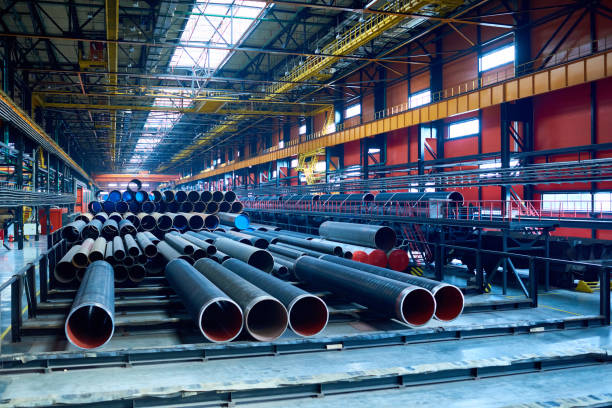
Steel is the foundation of modern infrastructure, transforming skyscrapers, bridges, and transportation networks by providing strength and durability for large-scale construction projects.
Steel’s history spans thousands of years, from ancient civilizations’ simple iron smelting to modern methods. The Industrial Revolution introduced the Bessemer process, enabling mass production and cost reduction. Innovations like open-hearth furnaces and electric arc furnaces refined steel production, making it more efficient and versatile.
Steel’s high tensile strength and flexibility make it a crucial material in modern architecture, enabling taller, daring structures like skyscrapers. Its recyclability and sustainability make it suitable for stadiums, airports, and residential homes, promoting sustainable construction practices and enhancing the aesthetic appeal of contemporary buildings.
Steel plays a crucial role in the transportation sector, supporting the infrastructure that keeps societies connected. Railways, for example, heavily depend on steel for both the tracks and the rolling stock. The material’s durability ensures that trains can travel safely and efficiently over vast distances. Bridges, another critical component of transportation networks, often use steel owing to its strength and flexibility. Iconic structures like the Golden Gate Bridge and the Brooklyn Bridge showcase steel’s capability to span large bodies of water while supporting heavy loads. Moreover, steel is integral to the automotive and aerospace industries, where it is used in the manufacture of cars, airplanes, and ships. Its robustness and lightweight properties make it ideal for building vehicles that are both safe and fuel-efficient.
Contrary to popular belief, steel is an environmentally friendly material. One of its most significant advantages is its recyclability—steel can be endlessly recycled without losing its properties. This means that old steel structures can be melted down and repurposed, reducing the need for raw material extraction and minimizing waste. Modern steel production methods have also become more energy-efficient, incorporating green technologies to lower carbon emissions. Additionally, steel’s longevity means that buildings and infrastructure made from it require less frequent replacement and repairs, further reducing environmental impact. As the world shifts towards more sustainable practices, the demand for eco-friendly construction materials like steel is likely to increase, cementing its role as a cornerstone of modern infrastructure.
The future of steel technology promises even more exciting developments, driven by the need for stronger, lighter, and more sustainable materials. One area of innovation is the development of high-strength, low-alloy (HSLA) steels, which offer excellent mechanical properties at a reduced weight. These advanced materials are particularly beneficial for the automotive and aerospace industries, where weight reduction is crucial for improving fuel efficiency. Another promising avenue is the use of nanotechnology to enhance the properties of steel. By manipulating materials at the molecular level, scientists can create steel that is stronger, more resistant to corrosion, and even self-healing. Furthermore, advances in 3D printing technology are opening new possibilities for steel construction, allowing for more precise and efficient fabrication of complex structures. As research continues, the potential applications of steel will expand, ensuring its place at the forefront of industrial and technological progress.